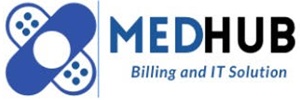BOOK A FREE CONSULTATION!
Accounts Receivable (A/R) Management
Accounts receivable is the amount to be paid to the health care providers. It includes pending payments from the patient and insurance companies. AR is a worthy thing in the revenue cycle management of medical billing. In efficient AR management charges, payments, adjustments, and denials are monitored. The accounts receivable management services help smoothly running the financial cycle of a medical practice.
Get 24/7 medical billing support with Medhub Billing, ensuring seamless operations and uninterrupted revenue flow anytime you need it.
Call Us :346-340-6664
Quick Review!
Accounts receivable is the money to be paid to the providers.
Comprehensive AR management monitors charges, payments, adjustments, and denials to maintain cash flow.
Taking help from the AR management company to help manage efficient cash flow and increased patient care.
What Is Account Receivable A/R In Medical Billing?
In medical billing, account receivable is the amount owed by the healthcare providers in return for the services they provide to the patients. It involves recovering the money that is outstanding at the patient’s or insurance company’s end. At the start of AR management, billing the patient or submitting the claim to the insurance company takes place. While managing accounts receivable, AR is written as an asset on the balance sheet. When the AR of a healthcare practice is monitored, it provides a clear picture of financial condition.
Managing your accounts receivable effectively means a financially stable medical practice. In this way, the providers can focus on patients without any other worries.

6 Key Elements To Monitor In
Your A/R Report!
In the effective operations of your practice, it is important to investigate the claim denial and payment delay. The medical billing process plays
a vital role in this regard. These medical billing reports are important to track and fix the issues in medical billing. They help in keeping details
of payments, claims, and managing account receivable. Keep reviewing these A/R reports.
Identify Credit Risks
The AR reports help you in providing an estimate of the uncollectible debts, it also tells you about the receivable amount that is not being collected for different reasons. Then it shows the uncertain balance for the account to be maintained.
AR Report Track
In the process of account receivable management, the AR report helps in monitoring the outstanding payments. Normally, most of the claims are paid within a month. The report may detect the possible reason for payment delay, more details are shown in the other report.
Red Flags
In a medical building, the unaddressed insurance-related technical problems are considered as a red flag. It may take 1 to 4 months to process the claims. It happens when there is a problem between the insurance provider and the practice, due to any specific reasons. There may be an unresolved technical problem. It may result in payment delays and consequently it can affect the business' financial health. What is necessary to resolve the technical issues between the practice and insurance as soon as it is detected.
Importance of AR Report
A/R report plays a vital role in managing the account receivable. It provides useful insights about the financial condition of the healthcare practice. Make some necessary steps like by streamlining the collection process, increasing cash flow, identifying credit risks, keeping contact with patients, and evaluation of payment process to improve practice's AR management and maximize the revenue.
Efficient Collection Processes
The AR aging report helps the AR team of your practice to streamline the collection process. For example, there is a large percentage of outstanding payments that are unpaid since 60 to 90 days, which is a signal that your collection process requires improvement.
Improved Cash Flow
Account receivable management services ensure improved cash flow. In this regard, the account receivable aging report presents a clear picture of who owes cash to the health care practices. And how much credit is left unpaid.
1200+ Providers Served
100+ Medical Specialties
500+ Cerftified Coders & Biilers
50 State Served

Accounts Receivable Aging Report!
The account receivable aging report represents the outstanding amounts, whether it is a patient balance or insurance claim. It shows the details of unpaid amounts for more than 120 days. It shows both the percentage and monetary value.
The accounts receivable aging report determines the practice’s health and evaluates the performance of the billing department. For the purpose of AR management, this report can be constructed manually. But it will consume too much time. It is better to use a software for producing the report with 15 to 20 patients daily. The practice may be at a loss for not using this software.
By using the practice management system and the billing software for analyzing the procedures. You can check the status of billing processes, i.e, denied claims, and solve those issues with the help of precise data analytics and AR reports.
An expert medical doctor is capable of knowing the performance of the building department. He gets to know it by looking at the 150 plus days column on the report.
Find world Best Services & Resources!
MedHub Billing Company!
Why Choose us MedHub Billing for A/R Management?
At MedHub Billing, we specialize in streamlining your Accounts Receivable (A/R) management to ensure timely payments and reduce outstanding balances. Our experienced team works closely with healthcare providers to improve cash flow and minimize delays. We offer personalized solutions that help reduce denials and improve claim follow-ups. By choosing us, you can focus on patient care while we handle the complex billing process. Let us optimize your revenue cycle for better financial health and peace of mind.

5 Key Elements To Be In AR Report!
The account receivable reports make the practices and providers efficient, so that they can make wise decisions
to recover the denied claims. Some important key factors must be present in AR reports
for having an efficient account receivable management. Those factors are:
1- Account Receivable AR Days!
Accounts receivable/AR Days refers to a specific number of days. These are the number of days that a medical billing office or healthcare organization takes for the collection of an outstanding amount. The amount is collected from the insurance company against the services provided by the providers to the patients. It makes a good accounts receivable control.
Why consider AR days?
Consider A/R Days to identify possible problems with the revenue cycle and efficiency of the billing team.
It represents the number of days you normally take to collect the amount again in medical billing. More A/R days is a threat for healthcare accounts receivable management. It can be reduced by tracking claims reimbursement and routine follow ups.
- 1- A/R shows possible revenue problems.
- 2- Assessment of the billing team.
- 3- Identify the average days you take to get paid.
Calculations:
- The formula to calculate A/R days is Accounts receivable× the number of days in a yea
- 2- Assessment of the billing team.
- 3- Identify the average days you take to get paid.

2. Percentage of Accounts Receivable (A/R)
The percentage of accounts receivable (A/R) that’s over 90 days old is a key metric in healthcare revenue cycle management. It’s like a report card for how well your billing and collections processes are working. If too much of your A/R is older than 90 days, it’s a red flag that payments aren’t coming in on time, which can strain your cash flow and hurt your bottom line. On the flip side, a low percentage means you’re doing a great job of collecting payments promptly and keeping your revenue cycle healthy.
Why does this matter?
- It gives you a clear picture of your organization’s financial health.
- It shows how effective your billing and collections processes are.
- It helps you stay on top of your financial stability.
How is it calculated?
To find the percentage of A/R over 90 days, divide the total amount of A/R older than 90 days by your total outstanding A/R, then multiply by 100.
Formula:
(Total A/R over 90 days / Total A/R outstanding) x 100
Example:
If your healthcare organization has
500,000 in total A/Rand500,000 intotalA/Rand100,000 of that is over 90 days
old, the calculation would be:
(100,000/100,000/500,000) x 100 = 20%
- It gives you a clear picture of your organization’s financial health.
- It shows how effective your billing and collections processes are.
- It helps you stay on top of your financial stability.

Get A/R Management Services with MedHub Billing
3: How is it calculated?
To find the percentage of A/R over 90 days, divide the total amount of A/R older than 90 days by
your total outstanding A/R, then multiply by 100.
Formula:
(Total A/R over 90 days / Total A/R outstanding) x 100
Example:
If your healthcare organization has 500,000 in total A/Rand, 100,000 of that is
over 90 days old, the calculation would be:
(100,000/100,000/500,000) x 100 = 20%

Net Collection Rate (NCR)
The net collection rate measures how much of your revenue you’re actually collecting from patients and insurance companies after accounting for adjustments. A high NCR means you’re billing on time, resolving claims efficiently, and collecting patient balances effectively.
Why does this matter?
- It’s a strong indicator of your practice’s overall financial performance.
- It reflects how well your billing and collections processes are working.
How is it calculated?
(Payments / Charges – Contractual Adjustments) x 100%
Benchmark:
If your NCR is below 95-100% after write-offs, it’s a sign that your performance needs improvement.
Denial Rate
The denial rate measures the percentage of claims that payers reject. A low denial rate means your claims are being handled efficiently, which keeps your cash flow healthy. If your denial rate is high, it can drag down other key performance indicators, so it’s important to address denials quickly.
Why does this matter?
- It shows how efficient your revenue cycle management processes are.
- It gives you insight into the health of your cash flow.
How is it calculated?
Total denied claims / Total submitted claims (for a specific period)
Benchmark:
The industry average denial rate is 5-10%
MedHub! Your Partner in Maximizing Medical Billing Potential
Are claim denials or payment delays holding your practice back? Every missed or delayed payment can slow your growth and affect patient satisfaction.
That’s where MedHub comes in. We’re more than just a medical billing company—we’re your partner in success.
How MedHub Can Help:
With our state-of-the-art practice management system and expert guidance, we’ll streamline your billing process, making it transparent, efficient, and hassle-free.
Our A/R Services Include:
-
Detailed Analysis:
Get a clear picture of your outstanding balances, payer breakdowns, and aging data. -
Issue Resolution:
We’ll help you identify discrepancies, manage denied claims, and tackle potential challenges head-on. -
Insightful Recommendations: Receive proactive tips to improve billing efficiency and prevent future issues. -
Dedicated Support: Our team is always here to assist, guide, and keep your billing processes running smoothly.

Take Action Today!
Don’t let billing issues slow you down. Explore your A/R reports and resolve problems before they become bigger obstacles. Partner with MedHub and turn your billing challenges into wins. Schedule Your FREE Demo Today!Don’t let billing issues slow you down. Explore your A/R reports and resolve problems before they become bigger obstacles. Partner with MedHub and turn your billing challenges into wins. Schedule Your FREE Demo Today!
Final Thoughts
Understanding your A/R reports is more important than ever. By keeping an eye on the key metrics we’ve discussed, you can ensure your practice stays financially stable and continues to provide top-notch care to your patients. Spotting issues early allows you to take corrective action before they escalate. Thanks to modern technology and automation, tracking and managing these metrics has never been easier—but the first step is understanding what they mean and why they matter.
Want to boost your revenue? Let's talk!
98%
Clean claims on the first submission
100%
HIPAA Compliance
24/7
Live Support
30%
Increase in Collections
FAQs
A/R reports track outstanding patient balances and insurance claims, giving you insights into your practice’s financial health. They help you streamline collections, improve cash flow, and identify potential risks.
This report shows how much of your A/R is unpaid over a specific period (like 120 days). It’s a great way to gauge how well your billing department is performing and spot potential collection issues.
The A/R Report organizes claims based on how long they’ve been unpaid. Most claims should be settled within a month, so monitoring this timeline helps you catch billing problems early.
Manual reports rely on human input, which can be slow and prone to errors. Automated reports use software to process data faster, with fewer mistakes and greater scalability. However, the quality of automated reports depends on the software you use.
Tracking metrics like A/R Days and Denial Rate gives you valuable insights into your revenue cycle, billing team efficiency, cash flow health, and overall financial stability. You can take action early and keep your practice running smoothly by staying on top of these numbers.
